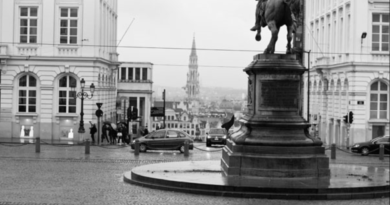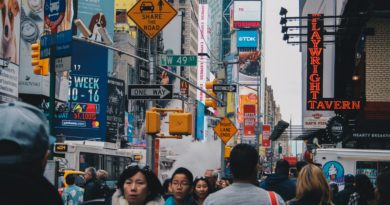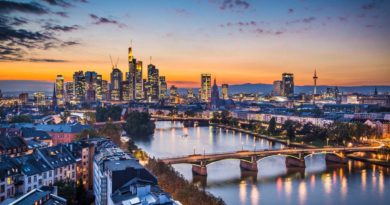Discover the city: Four Amazing Buildings in Brussels
Tourists, expats and even people from Brussels themselves are often pleased and entertained by the incredible architecture of the city. It is, in fact, rich of different styles, influences, history and art, vital elements that give to Brussels its unique aspect and atmosphere. Among the various private art-deco houses that adorn the city, there are some public -and more classical- spots that represent the history and culture of Brussels. These buildings are an active and fundamental part of the urban landscape and of the city’s identity. Four in particular represent, each one in a different way, the development through time of the city and of its inhabitants; they portray the values, ideas and mindsets of Brussels’ ancestors and their endurance through history and time.
Palais de la Bourse
Built at the beginning of the 19th century, the Brussels’ Stock Exchange was designed to be a symbol of modernization, influence and technique. The aim was displaying the power and economic development of the city, while following the modernization and enlargement process of the metropolis started by Paris. Moreover, it was presenting new building processes and techniques, to prevent the flooding caused by the Senne river in the centre.
La Bourse was erected on the ruins of a 13th century monastery; it is in neo-palladian style, which recalls several elements of classical architecture, such as the antique-temple-like aspect, the Corinthian columns, a dome and a fronton; the neo-classical influence is also present in the structure of the building, shaped as a Latin cross. La Bourse is sumptuously decorated with allegories and rich details, that were meant to meet the taste of the old bourgeoisie. The two monumental lions on the sides represent both the Nation and the “bears and bulls” symbols of the stock market.
The Stok is not used anymore for the market, but it is still possible to enter and visit it. At the moment, it is hosting the exhibition of Steve McCurry (until the 25th of June).
Palais de Justice
The Palace of Justice is one of the most famous, remarkable and important buildings in the city’s landscape and history.
It was finished in 1883, after seventeen years of work, and it has a total surface of 26.000 m2, 4.000 m2 more than Saint Peter’s Basilica in Rome. This building too presents classical influences in its composition, structure and details (for example in the dome, in the sculptures and decorations in the peristyle), but it also presents a more modern and sober configuration, some neo-baroque elements and eclectic adaptations.
The palace was erected right after the achievement of Belgian independence, to fulfill the need of a space to administer justice. Its creation and, in particular, its colossal dimensions, represented the power of the new country and its leading role in the Industrial revolution. Moreover, to complete the ambitious project and guarantee to the palace a unique location on the old part of the city, many houses and buildings were destroyed in the Marolles district. The Palace of Justice represents still nowadays the desire of growth, development, modernity and direct application of technique and industry typical of the beginning of the 19th century and of the industrial revolution.
It is possible to visit it for free every day, except for Saturdays and Sundays, from 8:00 to 17:00.
Palace Royal
The Royal Palace is situated in front of Brussels Park and since the first glance it surprises the visitor with its incredible size. It is still used by the royal members for formal meetings and receptions, although the family usually lives in the Royal Palace of Laeken, so normally it is not possible to visit it. Nonetheless every year, in occasion of the king’s holidays, the palace is open and it’s possible to admire the incredible architecture and the works of art hidden on the inside. This year for instance, the palace will be open from the 22nd of July to the 15th of September.
The first nucleus of the palace was built on the 18th century, although the façade was rebuilt on 1900. It was raised over a previous construction, the Coudenberg Palace, a complex erected in the Middle Ages. The building offers a great variety of work of arts and exhibitions, which were expanded and developed through the years also thanks to the Queen, who added some pieces of modern art in some of the state rooms.
The palace offers incredible masterpieces and beautiful rooms, such as the Throne room, the main staircase, the State rooms (with original furniture and portraits of previous Belgian monarchs) and the Mirror room.
Basilique Nationale du Sacré-Coeur à Koekelberg
The National Basilica of Sacred Heart is the fifth largest basilica in the world! It is still used for religious functions, but it also hosts art exhibitions and it is a great example of art-deco style.
The construction started at the end of the 19th century and it lasted for almost a century! Once again, also this building was started after the independence, to create a unique and majestic church for the capital, to express the quick development of the Nation and to offer to the citizens a work of art similar in proportions and style to the Basilica of Sacred Heart in Paris. The style of the church combines the concepts of simplicity and geometry, creating an incredible and harmonious complex.
If you are visiting the Basilica, don’t forget to check out the external gallery right under the dome: at almost 53 m from the ground, it offers a breathtaking view over the city!



